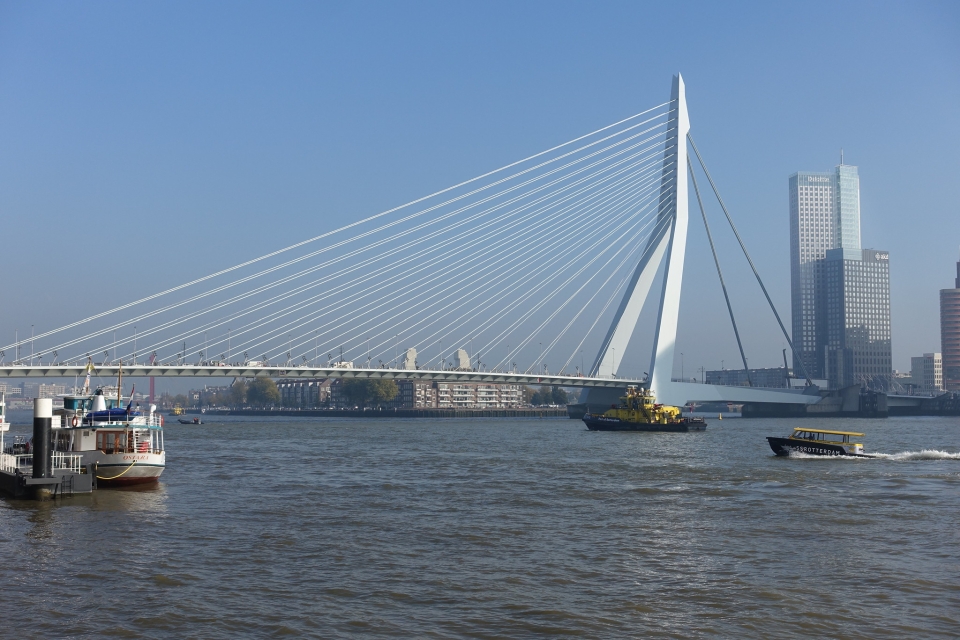Port of Rotterdam harbour master René de Vries looks back on a safe year, according to the nautical figures for 2023, but the number of incidents involving passenger and pleasure boats continues to require attention. Among the proposed measures to make navigation on the Nieuwe Maas river safer are separate shipping lanes.
Last year, the number of visiting sea-going vessels and inland vessels in the port of Rotterdam dropped significantly; from 29,029 to 27,886 and from 97,459 to 89,183 respectively. There were no serious accidents and the number of other accidents rose from 137 to 159. The Nautical Safety Index – the index indicating the degree of safety – rose from 6.39 to 7.51.
Also read: Air Liquide to build CO2 capture unit in Port of Rotterdam
Separate boating lanes
De Vries embraced the recent recommendations of the Dutch Safety Board to provide additional protection for the most vulnerable users of the port – passenger shipping and pleasure craft.
‘We see boating usage in the city region getting busier and busier,’ says the harbour master. ‘We are doing our best to influence boating behaviour in recreational and passenger shipping. But that is not enough. We have been talking with the ministry for some time about making separate boating lanes for recreational and passenger boating. It would be a good thing if we come up with concrete measures on the Nieuwe Maas this year.’
The Nieuwe Maas is a main waterway of the Netherlands. Such measures should be taken by the Ministry of Infrastructure and Water Management, states the Port of Rotterdam Authority.
Also read: DSB after water taxi incident: Nieuwe Maas shipping needs more direction
More spills
The number of spills/leaks reported this year rose to 216. Normally, around 180 spills are reported annually. The abundant rainfall in recent months is partly to blame. Twenty per cent of reported water pollution comes from the shore.
From 1 January, this figure will be included as a critical performance indicator for the harbour master. Meanwhile, the registration of spills has been significantly improved so that causes can be better visualised and, through additional monitoring, the figures can be influenced. The Harbour Master Division is in talks with some terminal owners to reduce water pollution.
Also read: Only slight impact of Red Sea unrest on Rotterdam throughput
Shore power, methanol and ammonia
The harbour master supports the municipality’s sustainability ambitions and is committed to energy transition. The harbour master is satisfied with the use of shore power in the city centre, especially along the Noordereiland and Maashaven, which is well used. The use of shore power in the western port area is virtually zero. The Port Authority is going to introduce a generator ban here too, but is still consulting with customer representatives about this.
Last year, a container ship sailing on methanol bunkered bio methanol for the first time in the Port of Rotterdam. This successfully completed a long process of preparing ships to use methanol. From now on, methanol bunkering has become a normal activity in Rotterdam.
Meanwhile, preparations have started for ships to run on ammonia. The harbour master expects the first ammonia-powered ships in the port in 2025. These can only bunker here if they can do so as safely as bunkering LNG (liquefied gas) or fuel oil.
Also read: X-Press Feeders’ first methanol ship to sail from Rotterdam
Port Waste Plan
In the ports of Rotterdam, Schiedam, Vlaardingen, Maassluis, Moerdijk and Dordrecht, ocean-going vessels can drop off all types of shipping waste from seafaring. The delivered waste is taken by the collectors by truck or barge to recognised waste processors.
Recently, the Port Authority amended the Port Waste Plan. The delivery obligation now applies to all ship-generated waste. The aim of these amendments is to provide the greatest possible incentive for the delivery of rubbish (including fishing gear and passively fished waste). Ships pay the fees through the mandatory waste fee under the general conditions.
Focus on the port
Gone are the days when the seagoing patrol boats RPA 15 and RPA 16 went out to sea every day to escort ships that are required to sail in the Eurogeul due to their draught. Until 1 January, the Port Authority’s seagoing patrol boats only went out to sea to escort special transports and incidents. That is too little to build up routine.
‘This year we won’t go out anymore. We can make good use of the freed-up capacity for our work in the port,’ says De Vries.
Picture: Nieuwe Maas river and Erasmus Bridge (by Guilhem Vellut/Flickr).
Also read: Impala buys HES Hartel Tank Terminal in Rotterdam








